The final article in our series on understanding high-end car audio systems moves away from the need for accurate system design, integration, configuration and calibration to discuss audio product quality. If you’ve been a long-time reader of the articles at BestCarAudio.com, you know that we put a significant emphasis on identifying car audio products that perform well. Importantly, those solutions aren’t always the most expensive options. Let’s discuss what higher-quality audio products sound like and how they should behave.
What Is Car Audio Product Quality?
Depending on your point of view, audio product quality can have a lot of different meanings. From the perspective of the retailer you’re working with, it might mean that a particular brand is incredibly reliable. For example, we’ve tested amplifiers from Rockford Fosgate and ARC Audio that can run at their maximum rated power for at least 20 minutes without any issues. In contrast, in the same tests, we’ve tested other amps that overheat and shut down in under three minutes. If you play your music at high volume levels or live somewhere that’s hot in the summer, picking an amplifier with a functional heatsink design will help keep your music playing without interruption. An amp with better cooling capabilities will likely last longer than one that overheats its internal components frequently.

We ran the Rockford Fosgate T500-1bdCP for more than an hour at full power – it didn’t seem to care.
Another consideration in audio product quality is noise. Many low-priced source units use low-quality preamp output stages and even more amplifiers that produce audible amounts of hiss while they make a lot of power. Listen to almost any motorcycle audio system with super-small amplifiers, and you’ll hear the system hissing when no music is playing. Audible noise like hiss isn’t acceptable in a high-end car audio system. During the system design stage, part of the product selection process is to audition the products you want to use. This might be on the store’s display board or a demo vehicle. It’s crucial that you listen for absolute silence between tracks. One note: Every piece of electronics adds a tiny bit of noise. If you put your ear up to a tweeter, you’re going to hear something. That’s OK. When the noise is loud enough to be heard at the regular listening position, then it’s a problem.
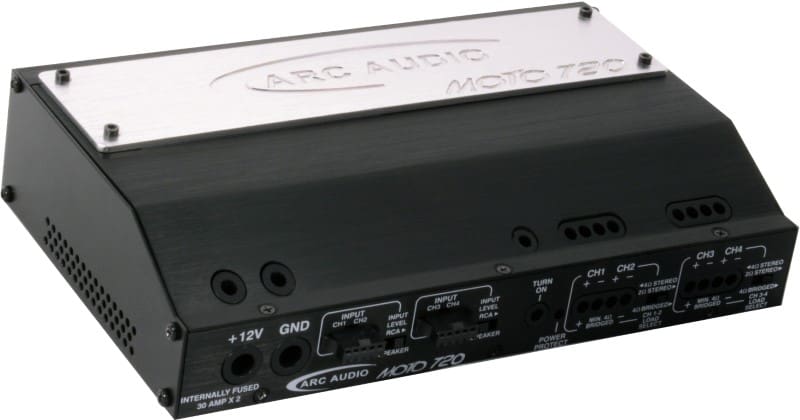
If you want great sound on your motorcycle that’s free of unwanted noises, the ARC Audio Moto720 is a perfect choice.
Speaker Quality Characteristics
When it comes to all-out audio system performance, the difference between regular consumer-grade speakers and those that sound truly magnificent comes down to frequency response and linearity. Both are relatively easy to distinguish. Once again, part of the purchasing process is to audition the speakers before you purchase them. As we’ve mentioned, you’ll want to bring along your absolute favorite music and listen to it on several speaker options. We recommend starting with a speaker that might even be slightly above your price range. This “should” set a benchmark for how accurate your music can sound. However, there’s a problem. There are several “boutique” or “luxury” brands that, while they are expensive, don’t offer genuinely high-end performance. As such, the key to getting the most bang for your buck will be to visit several retailers and audition as many speakers as possible. After a few visits, you’ll be able to pick out the designs that offer truly accurate performance.
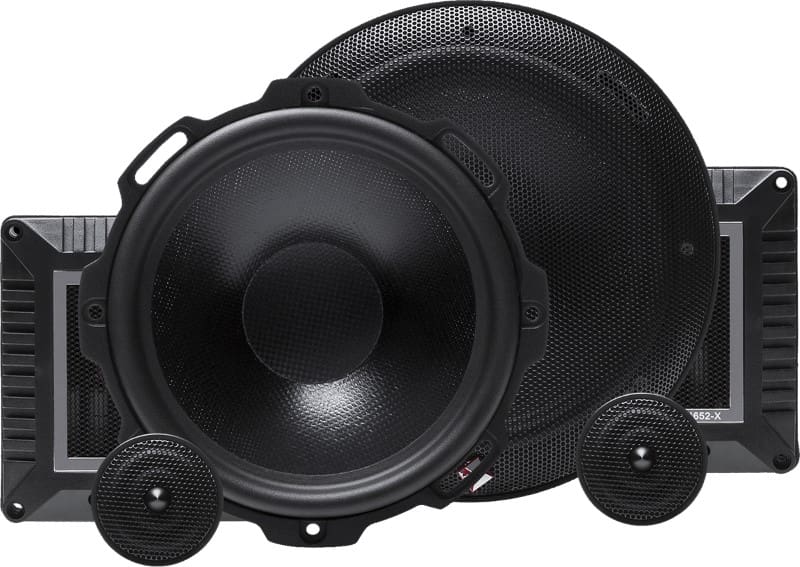
One of the most pleasant surprises we’ve encountered is the Rockford Fosgate T4652-S component speakers. These sound better than many solutions that cost two to three times as much.
Here are a few tips for auditioning speakers for linear frequency response. Start with the easy stuff. Listen for unwanted emphasis in the high-frequency region. The letters S, T and P might be too loud if there are issues with a midrange or improper level-matching of a tweeter. Listen to music that doesn’t have too many instruments. We hear people talk all day. So listening to voices is a great way to audition speakers. We know a few people actually listen to movie soundtracks rather than music, as the vocal recordings are sometimes less processed. We recently started using “Into My Arms” by Nick Cave & The Bad Seeds for this very purpose. “Spanish Harlem” by Rebecca Pigeon is another track that will make any frequency response issue stand out. No, neither of these is a fun audio system demonstration track. They are, however, a great way to assess the quality of the speakers.
You want to listen for dynamics at lower frequencies, as would be produced by woofers and subwoofers. This is the second characteristic of speaker quality. Listening at lower volume levels doesn’t tell you much because the speakers aren’t working very hard, and, as such, the cones aren’t moving much. Inexpensive or low-tech speakers can sound fine when loafing along at these volume levels. Where features that improve linearity come into their own is when you start to really turn up the volume. First and foremost, the music should just get louder. There shouldn’t be any change in frequency response or tonal balance. Bass frequencies, in particular, should remain tight and dynamic.
If things get sloppy or boomy, the speakers you’re listening to have linearity issues. The problem could be a simple excursion issue where the speaker has run out of voice coil length. The issue could also be more complicated. Some speakers, especially larger woofers like a 6.5-inch, change frequency response depending on the cone position. When the voice coil is in its most outward or forward position, less of the voice coil is in the magnetic gap, so there is less inductance. When the speaker moves rearward, the opposite happens. With more of the voice coil wrapped around the T-yoke, there is more inductance and, as such, less upper midrange output. These position-based issues are surprisingly common in mid-priced speakers and those expensive speakers that are just overpriced mid-quality solutions. While not a guarantee of performance, woofers and subwoofers that include copper or aluminum shorting rings or a copper T-yoke cap typically exhibit less change in performance as the cone moves inward or outward.
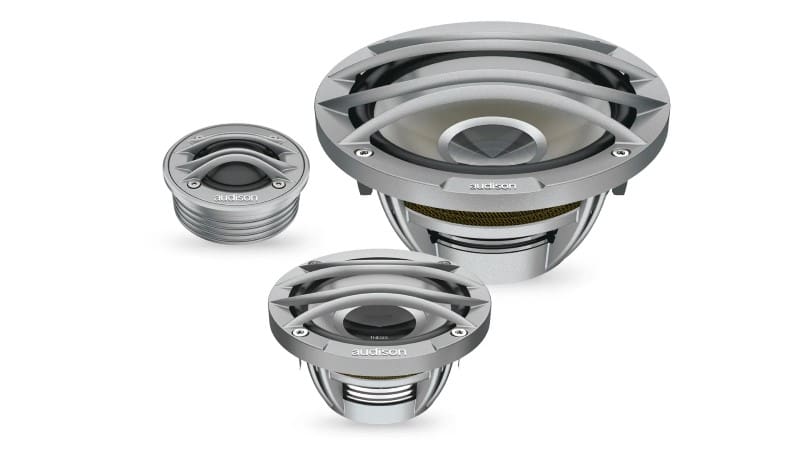
Speakers like the Thesis series from Audison include technologies like a shorting ring to help reduce distortion and improve clarity.
Amplifier Quality
Sadly, there are no specifications available from reputable manufacturers that completely describe an amplifier’s sound. Of course, frequency response is a factor, but nobody provides measured frequency response under a reactive load. Further, there is no standard for a reactive load test. As such, predicting their performance is impossible, particularly in the case of Class D amplifiers.
Second, relevant distortion measurements or specifications are also difficult to interpret. Some companies that offer great-sounding amplifiers say that their amplifiers operate at less than 0.1% THD+N. I would hope so, as that’s a pretty lousy distortion specification. Others that provide really low distortion specifications, like 0.002%, aren’t clear about how they measured that number. Was it at a particular frequency or output level? Based on our extensive experience with reviewing amplifiers, it appears that intermodulation distortion performance is more relevant to the “sound” of an amplifier than harmonic distortion. Even fewer companies even test for IMD or publish relevant data.
As an aside, the lack of accurate and detailed quantification of amplifier performance allows these boutique and luxury brands to proliferate. Consumers are often misled by the higher prices, thinking that they are buying something truly magnificent. Often, the reality is that these solutions are inexpensive products with strong marketing programs. See “Lipstick on a Pig” for reference. But we digress.
So how do you pick an amplifier that sounds good? Once again, it would be best to listen to as many as possible under controlled conditions. This means using the same speakers and volume levels. Making this happen is extremely difficult, as very few retailers match the amplifiers on their displays so they all produce the same output. We have decades of experience in auditioning amplifiers, and we can pick out the ones that sound bad, good or great, often in different systems. However, expecting anyone to devote thousands of hours over decades to establish this experience is unreasonable.
The answer remains: You have to listen. Dynamics are once again a good tell. We recently reviewed a small amplifier. It sounded pretty good at lower volume levels. The reduced energy storage (because of the small size) made the amp sound softer when pushed harder. The attack of a kick-drum was mushier. A rim shot on a snare didn’t make us wince. Now, it’s really difficult to separate the difference in amplifier performance at low versus high output levels from the same changes in performance from speakers. As such, you want to audition amplifiers with genuinely high-quality speakers, even if they are better than what you plan to use.
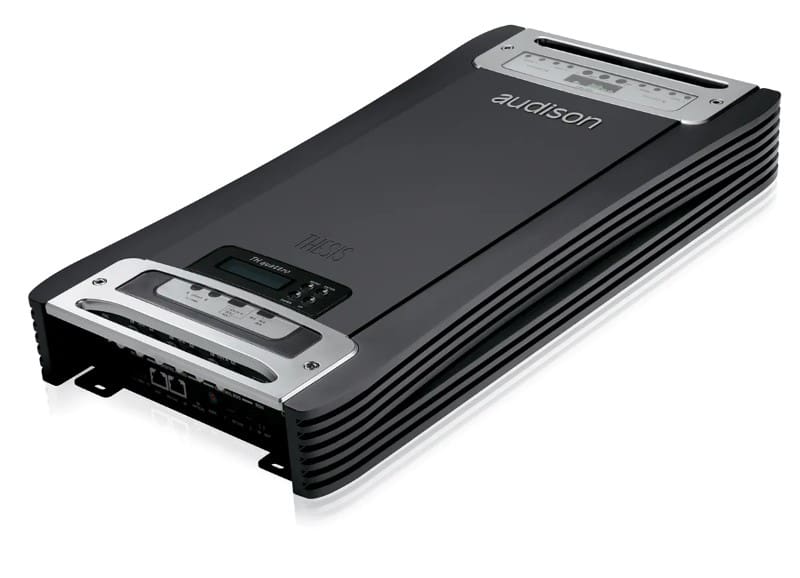
High-end Class AB amplifiers like these from Audison’s Thesis series sound incredibly accurate and detailed.
What Does Audiophile-Grade Car Audio Sound Like?
The point of building any audiophile-grade sound system is to extract the most accuracy possible from a recording. As the previous articles have detailed, the frequency response, sound source and imaging are crucial to presenting the music accurately. Those characteristics are primarily focused on audio system design, installation and calibration.
The difference between run-of-the-mill audio equipment and those components that sound truly exceptional is revealed as accuracy. Does a performer’s voice sound authentic or like a very good audio system? Realism is the next level. When it doesn’t sound like you’re listening to audio equipment, and it sounds like the performer or instrument is out in front of you, you are experiencing something truly exceptional. Of course, it takes a complete system to make this happen. A great source unit, a high-quality digital signal processor, excellent amplifiers and truly amazing speakers are all necessary. It all needs to be installed, configured and calibrated correctly, too!
A while back, we were rewiring the test bench in our lab. We use an ARC Audio PS8-50 to power the audio system on the bench and the nearby computer. The main computer’s TOSLINK digital output feeds audio to the amp. We also use the test bench computer’s analog output. After completing the rewiring, we tested everything to ensure that it was all working. We played the same song from each computer. There was an audible difference between the two sound sources. We fine-tuned the output levels to make sure it wasn’t a psychoacoustic trick and repeated the comparison.
The TOSLINK connection sounded better than the line output on the lab bench computer. Tonally and spatially, they sounded the same. The difference was in the clarity or transparency. There was less “other stuff” on the signal from the main computer. Think of it as hearing less static from a radio station. Better, think of it like less grain in a printed photograph. The image was identical, but it was clearer. Another example we use is the difference between driving with a spotless windshield and one that needs that annoying greasy film that builds up on the inside removed. Of course, you can see where you are going through both. However, the difference is clearly visible when you get that just-slightly-dirty window clean.
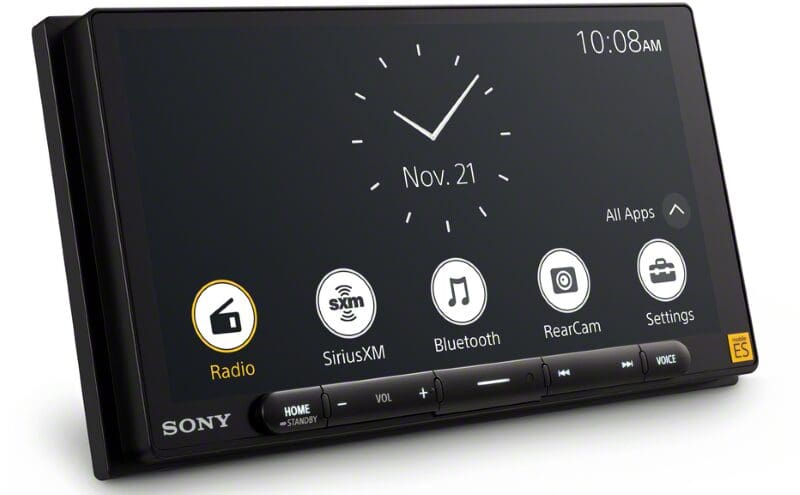
Any truly high-end audio system must start with a multimedia receiver that sounds excellent. The Sony Mobile ES XAV-9000ES is a perfect choice.
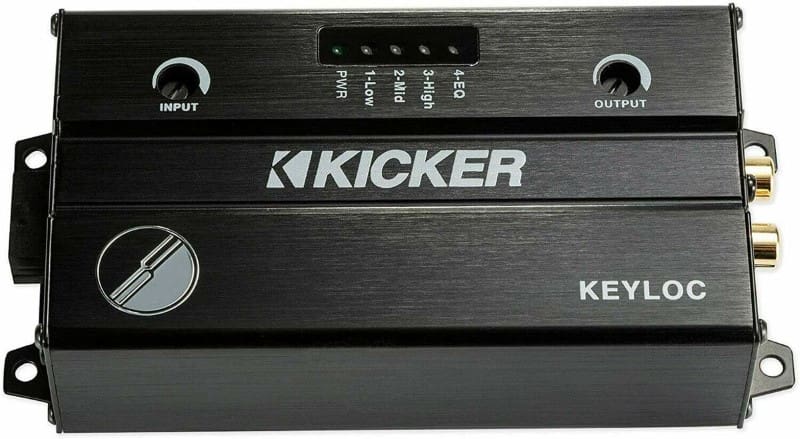
Products like the KICKER KEYLOC are instrumental in integrating premium audio equipment with factory-installed source units to deliver fantastic sound.
Wait, I Like My Music LOUD!
So far, this series of articles on audio quality hasn’t talked much about those who want their audio systems to play louder. Now, unfortunately, there are a lot of people who think loud doesn’t sound good. More people don’t know how good loud can sound. One of the best things about an excellent car audio system is that you are welcome to play it loud. You aren’t going to bother the rest of your family or the neighbors if you crank the volume while driving to work. You are in your own little entertainment cocoon.
A well-designed audio system should sound great at background levels and at concert levels. All the features that make a speaker great also allow them to play loudly. This wasn’t the case 20 or 30 years ago. High-end speakers of that era were fragile. They used tiny voice coils that didn’t weigh much. An audiophile-grade 6.5-inch woofer might have more output capability than some entry-level 8-inch subwoofers. If the SPL guys heard what great speakers sounded like, they’d ditch that pro-sound stuff in a heartbeat. We’ve converted a few folks over to using an audiophile-grade front stage for their systems that are capable of over 150 dB SPL. Their music stays clear and detailed, even at volume levels that blur your vision and rattle your fillings.
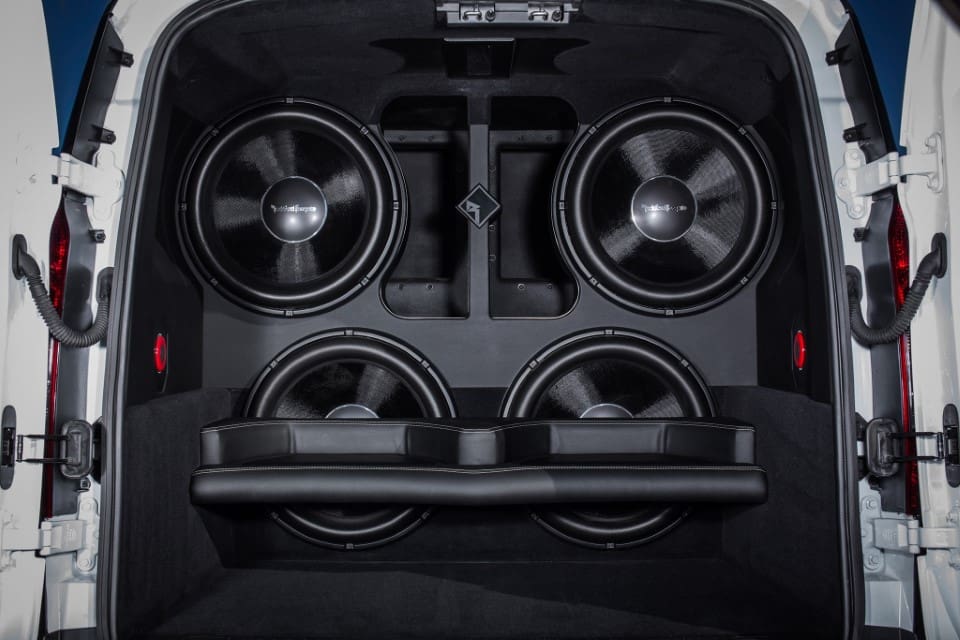
Loud can sound good. Many of the technologies that improve subwoofer output capability also improve their linearity.
The Four Stages of Truly Audiophile-Grade Car Audio
Well, there you have it, a series of four articles that explain what to expect from a genuinely audiophile-grade car audio system. If you are a true music lover who cares about the quality and accuracy of what you are listening to, take a drive down to a local specialty mobile enhancement retailer and start the process of designing a genuinely high-end audio system. Do your work beforehand to choose a shop that has the skills to properly execute the system design, integration, installation and calibration. Be sure to shop around. Many shops with great reputations can’t deliver on what we’ve talked about in these articles.
Associated Articles:
The Four Stages of High-End Car Audio – Frequency Response
We explain why proper system design and calibration are crucial to recreating music with realistic tonal balance and frequency response. (https://www.bestcaraudio.com/the-four-stages-of-high-end-car-audio-frequency-response/)
The Four Stages of High-End Car Audio – Part 2: The Soundstage
At a concert, the music you hear should sound like it’s coming from the performers on the stage. This article explains what to listen for to determine the accuracy of the soundstage in your car audio system. (https://www.bestcaraudio.com/the-four-stages-of-high-end-car-audio-part-2-the-soundstage/)
The Four Stages of High-End Car Audio – Part 3: Imaging
Once you’ve established a good soundstage, an audio system with precise imaging will provide the sensation of real live performers out in front of you rather than a blurred wall of sound. (https://www.bestcaraudio.com/the-four-stages-of-high-end-car-audio-part-3-imaging/)
The Four Stages of High-End Car Audio – Part 4: Product Quality
One of the most crucial components in designing a truly audiophile-grade car audio system is using excellent equipment. We explain what to look for in terms of speakers and amplifiers and why the performance difference is crucial.
This article is written and produced by the team at www.BestCarAudio.com. Reproduction or use of any kind is prohibited without the express written permission of 1sixty8 media.

Leave a Reply